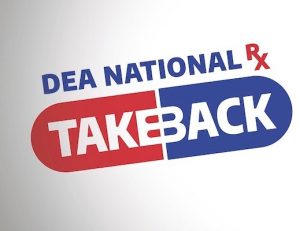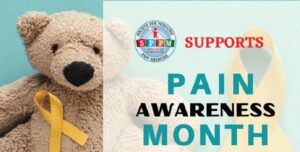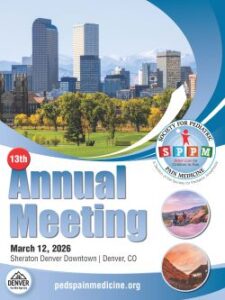Friends, In the words of our motto, SPPM as an organization is dedicated to “Better Care of Children in Pain.” The work we do to advance pediatric pain management makes a difference in the lives of our patients and their families. It matters. Today is Giving Tuesday, a day on which individuals […]
QUESTION OF THE MONTH/VISUAL PEARLS/POLLS OF THE MONTH
DECEMBER 2025 QUESTION OF THE MONTH
Question Authors: Maria Valeria Carrasquero, MD - Wellstar Medical College of Georgia, Augusta University and Marianfeli Landino-Delgado Irahola, MD - Wellstar Children's Hospital of Georgia, Augusta University
Question Editors: Rita Agarwal, MD, FAAP - Stanford University and Veronica Zoghbi, MD - Miller School of Medicine, University of Miami
A 10-year-old female, weighing 35 kg and six months post–liver transplantation, is referred to the pain clinic for evaluation of abdominal wall pain accompanied by bilateral leg pain following a complicated postoperative course. She is receiving tacrolimus and reports burning and deep aching pain that worsens with activity. Her average pain score is 6–7/10, sleep is disrupted, and she uses intermittent oxycodone at home with partial relief. Physical examination revealed focal tenderness near the transplant incision, with no redness, swelling, or other physical abnormalities. The patient also reported poor sleep quality, while laboratory tests showed normal allograft function.
A. Increase the dose of oxycodone and arrange for a short opioid taper after pain control is achieved.
B. Evaluate for tacrolimus-associated pain syndrome (CIPS) and discuss immunosuppressant adjustment with the transplant team.
C. Start gabapentin and schedule a diagnostic nerve block of the abdominal wall.
D. Recommend immediate revision surgery to explore potential surgical complications.
NOVEMBER 2025 POLL OF THE MONTH
Poll Author: Cheryl J. Hartzell, MD - Cincinnati Children's Hospital Medical Center - Cincinnati, OH




 SPPM 13th Annual Meeting
SPPM 13th Annual Meeting